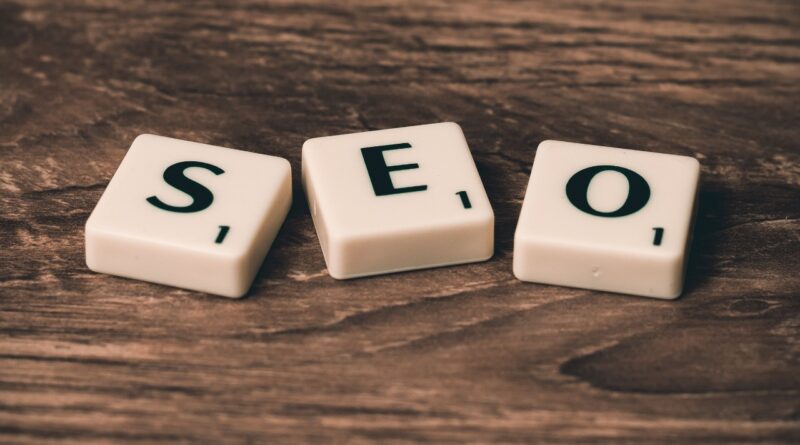SEO Basics: 17 Essentials You Need For Optimizing Your Site
A website without good SEO is non-existent. When a website isn’t visible, people will never know it exists in the online world and has the solution to their problems.
When people come across any problem; be it finding answers, checking figures and facts, or simply buying anything, they turn to Google. Did you know that Google receives 3.8 million search queries each minute?
Yes, not in a day, but a single minute!
This means if your website ranks better on the search engine result pages, then you can get good traffic to your website. For the improvement of the website, you have to work on your SEO to make it more visible to your prospective audience.
So, join us as we walk through the 17 SEO essentials for website optimization.
17 SEO Essentials For Website Optimization
1. Find Better Keywords
Keywords are extremely important for improving the SEO of the website. When a user comes to the search engine to find the solution to his query, he enters keywords and phrases to ask his questions.
If a website has optimized its content using the keywords and phrases that prospective customers might use, then it has increased the chances of ranking higher and getting more audience.
This is why selecting proper, relevant, and precise keywords are important for the website. Researching and selecting the proper keywords is the first thing on the Shopify SEO checklist.
Use the free keyword tools such as Google AdWords to help you select the relevant words.
2. Improve The Quality Of Your Content
The saying ‘Content is king’ is there for a reason. Why would a user come to your web page if you don’t have the content that they are looking for?
Instead of focusing on adding keywords to your content, try to create it for the users first. Keep in mind their concerns and problems, and then create the content that will help them. Make your content sound totally legit, engaging, and interesting. Use the latest information, add pictures, infographics, videos, etc.
Also, be consistent about publishing your content. Let your audience know that you exist. Don’t go on a long holiday after posting once or twice, or else your customers will leave you.
3. Optimize Your Website’s Design
A good design of a website is one of the essentials for website optimization. If the website’s design is not attractive, or if the web pages are cluttered with irrelevant pictures, videos, etc., it will annoy the user and exit the website.
Google takes into consideration how much time do people spend on a particular website. If people leave a website within a short time after they landed on it, then it will not send a positive signal to Google.
The increased bounce rate will affect your SEO ranking. Make sure you have user-friendly pages, easy navigation, and effective CTAs to improve the user experience on your website.
4. Accelerate Your Website’s Speed
On average, a user would wait for a maximum of 3 seconds for a page to load. This means every single second that your website takes to load, can deprive your business of the profits that you could have fetched easily.
Do not expect an online user to be patient while your website loads. No, they simply don’t have time to wait for a website to load, especially when they have thousands of other options.
Make sure the theme you have selected for your Shopify store, or a WordPress website is fast and doesn’t take forever to load. You can also optimize your images and codes to decrease the loading time.
Furthermore, if you have downloaded some extra apps and plugins, then uninstall them right away if they’re deactivated for a long time.
5. Internal Linking
It refers to the practice of linking your website pages together or linking the relevant articles with each other. For instance, if you are publishing an article on your blog page, then it will be a good idea to provide the link of your previous article in relevant places in your new article.
By having a good linking structure, your audience will be provided with more opportunities to stay on your page and read your other articles. Other than improving the user experience, it will help your SEO to boost.
When a user enters their search query in the search box of a search engine, the search engine sends robots to crawl the websites to display the relevant results to the user. By having internal links, you provide a gateway to the robots to crawl the maximum pages of your website. If you have not provided the links of your other pages and content, then robots will crawl limited pages which decreases the chances of ranking higher.
6. Provide Authoritative Reference
Providing the reference of authoritative sources supports the facts and information that you have mentioned in your content. It also makes your content more credible and trustworthy to your readers.
Therefore, always prop your facts and figures by mentioning the link of an authority website to make your content look useful and reliable to Google. The more links that you have, the more your readers will trust what you say.
7. Optimize Your Website For Mobile Users
Do you know an average person picks up his mobile 58 times a day? Instead of switching on laptops and computers, people have resorted to shopping by using their cell phones.
If your website is not responsive on mobile devices then you are likely to use a huge slice of the prospective audience. No business in its right mind would ever want to lose a large number of its potential customers.
If you want to optimize your site and improve your SEO, then don’t forget to add the mobile-responsive site to your Shopify SEO checklist. Make sure that your website works well on mobile devices. It is easy for a user to navigate the pages, explore your store, view the products, etc.
8. Provide Proper Meta Description And Title Tags
A Meta description is a short paragraph that is mentioned under the website links on the result pages.
Many people ignore the importance of a good Meta description because it doesn’t necessarily improve the ranking, however, a good Meta description has the power to compel the users to click on your website’s link on the search engine result pages.
Write a compelling description that is relevant to the headline and content of your page. You don’t have to write a long paragraph for this purpose. 150 words are good enough for the description.
Title tags tell the search engines and the audience what your web pages are about. Try to provide a unique title for every web page. It should be your priority to mention the relevant keywords that your potential audience might use, in the title tag of your code.
9. Include The ALT Attribute
Forgetting to include the alt attribute is a common mistake made by many websites when uploading pictures. By not taking a few extra seconds to fill up the alt tag, your SEO can seriously suffer.
Google crawls the website to display the results to a user, but Google can only “read the textual content” it cannot “view the resources.”
By including the ALT tag you let Google read what the picture is about. If the picture is relevant, your web page might rank on the Google Image Search Page if not on the result pages.
10. Include Social Sharing Buttons
Social media provides an excellent option to reach a larger audience and make them aware of your existence and the products you deal in.
Don’t forget to include social sharing buttons with your article, infographics, or videos, etc. Social share indirectly affects your ranking signals. Create interesting content and allow people to share it on their profiles to earn you some links, and to improve the SEO of your website.
11. Use Schema Markup
People don’t like simple textual information. They prefer content that is engaging and has good graphical content. Tell the people on the search pages that you have engaging content for them.
Thanks to the Schema markup tag of HTML. This tag helps the website to turn their display on the search result pages more attractive by adding star ratings, images, a thumbnail of videos, etc.
Schema is a widely used method to rank websites by many search engines, including Google. Use the Schema tag to let your website secure a higher rank.
12. Catchy Headlines
Having persuasive and catchy headlines is integral to make the user click the link to your website.
However, refrain from fooling your users by adding headlines that promise something which is not mentioned in your content. It will frustrate the user and he will exit your website which will increase the bounce rate.
Try to be as descriptive as possible, use less than 55 characters to make your headline completely visible in search engine result pages.
13. Fix Broken Links
Landing on a page that displays ‘Error 404, page not found’ is quite irritating for the user. If a user clicks on a link he expects to land on a page that will solve his query. Instead of valuable information, he will exit the website if he lands on a page that doesn’t exist.
Frequently check all the internal and authority links mentioned on your website. If there are any broken links, remove or fix the broken link immediately to prevent the user from landing there.
14. Post Frequently
Do not abandon your blog page after posting once or twice, no. Remember, the famous saying, ‘Out of sight, out of mind’. If you will not post valuable content for your readers, they will forget about you and move towards your competitor.
Moreover, Google extends its favor to websites that have fresh content for users.
15. Use Heading Tags Properly
The heading tags in HTML are not to be ignored. Use proper headings and subheadings to divide your content and make it easy to understand for your user.
Headings and subheadings help the users to get an idea of the content that they will find on your page.
16. Turn On Your Comments
Never turn off your comment section. When you keep the comments turned off for a post or an article, you won’t be getting an insight into what people think of your content, what points could’ve been added, or how it helped them.
Keep the comments on and allow the user to share their valuable feedback. Their feedback and suggestions will help you to find accurate keywords and how your content can be improved further.
17. Optimize Your Images
Optimizing your images will give you two benefits. Firstly, it will improve the speed of your website. Secondly, by attributing proper alt text, you’ll be allowing Google to index your images in the image search result.
Both of these things will directly favor your SEO. Use image optimizing tools to compress the file size of the image without compromising on its quality. Also, don’t forget to add proper alt text.
Summing Up
A good SEO can do wonders for your website and increase conversion. Contrary to this, a weak SEO will keep your website anonymous to your targeted audience. To improve your visibility on search engine pages and get more traffic, keep yourself updated about the SEO essentials for website optimization.
Working on your website’s SEO is not a one-time thing. It is an ongoing process that demands time, effort, and above all….consistency.
Use the above-mentioned SEO essentials to optimize your website and allow hefty traffic to visit your store.



